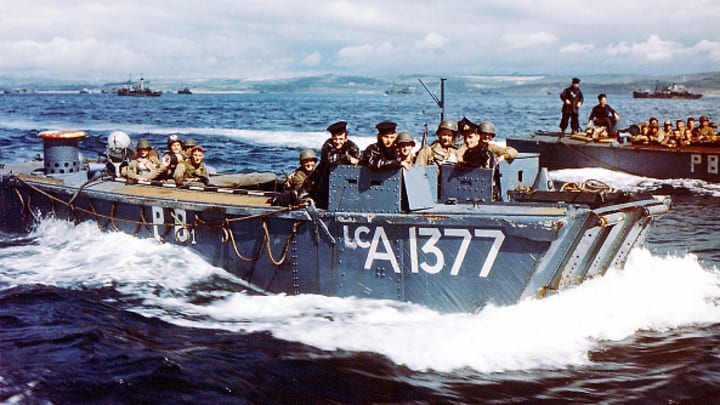June 5, 2024, would be the 80th anniversary of D-Day, if not for an unfavorable weather forecast.
In 1994, 50 years after D-Day, meteorologist Lawrence Hogben described how he and his colleagues had tried to predict the weather to determine the date of the attack. He was 28 at the time; after receiving a Distinguished Service Cross for his time in the Royal Navy, he became part of a meteorological committee for advising Supreme Allied Commander Dwight Eisenhower. Three teams of two men each worked on the problem: Hogben and Geoffrey Wolfe from the Royal Navy, a pair selected from the United States military, and one from the Met Office. Group Captain James Stagg of the Royal Air Force was responsible for mediating the three teams and reporting their decisions to Eisenhower.
Hogben recounted the specific meteorological circumstances the military required for the landing. Their analysis of weather patterns for the month of June “left just four possible days: 5, 6, 19, or 20 June. We worked out the odds on the weather on any one of these four dates conforming to requirements as being 13 to one against,” he remembered. “So meteorologically, D-Day was bound to be a gamble against the odds.”

But predictions had to be made. Two-day forecasts proved to be more reliable than those made five days out, so the hundreds of ships and tens of thousands of troops had to be ready to go on short notice. As the first window approached, the U.S. meteorological team confirmed a favorable forecast. “But,” Hogben wrote, “the cautious Met Office were for ‘no go’; so were the pragmatic Royal Navy.”
As Sunday, June 4 slipped into early Monday morning, Eisenhower and meteorologists watched the weather.
“At a hairy 4 a.m. meeting on Sunday morning, faced by a unanimous prediction of strong winds, low clouds and rough seas for the Monday, Ike postponed the operation for 24 hours, only two hours before the main body was due to sail,” Hogben continued. “The decision had been an emotional drain on all the participants, military and meteorological, and the whole nerve-racking process had now to continue for yet another day.”
The postponement proved fortuitous. A storm swept in, and no one knew if it would clear in time for an attack on June 6. That was the last option for several weeks—just a day away—and a decision had to be made. The U.S. military team again voted "go" and the Met Office stuck their guns with "no go." This time, Hogben and Wolfe gave the “go,” setting the stage for D-Day on June 6.
We know now how that critical choice turned out. “The gamble that the weather would be both suitable and forecastable had come off,” Hogben wrote.

How slim was the margin of error for one of the most important military actions in history? If they hadn't given a “go” for the 6th, the next option for the Normandy landing was June 19. All three teams predicted there would be fine weather that day—yet a massive storm hit on June 17, obliterating that option.
Writing in 1994, Hogben considered how much meteorological technology had improved.
“For shorter periods, the accuracy of today’s forecasts is most impressive,” he said. “In 1944 we only just got the most important weather forecast in history right. But we steered the invading army away from a potential disaster at sea and helped to make ultimate victory feasible.”
Read More Stories About World War II:
A version of this story was published in 2014; it has been updated for 2024.
